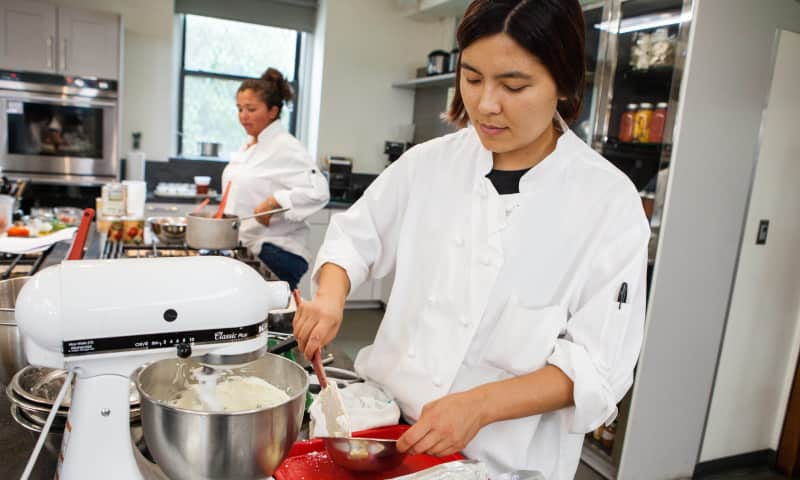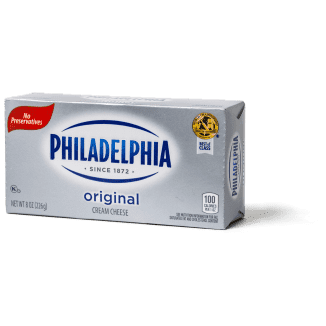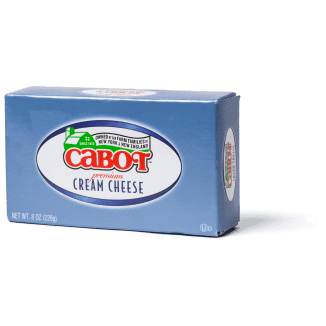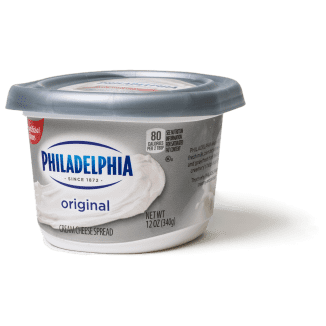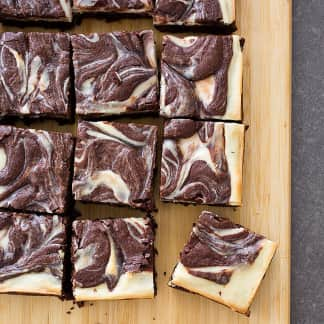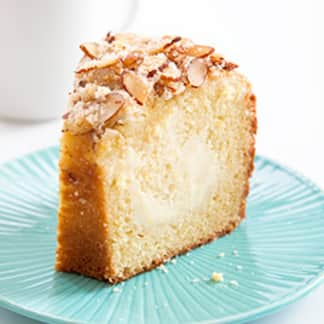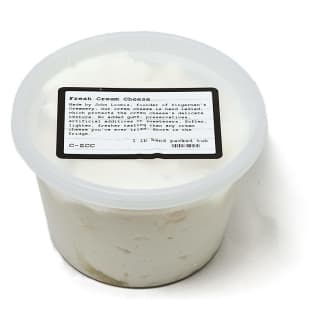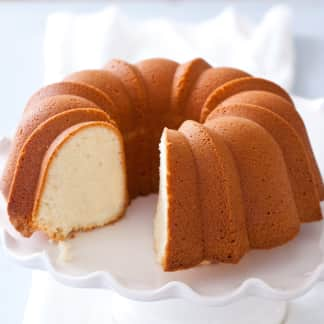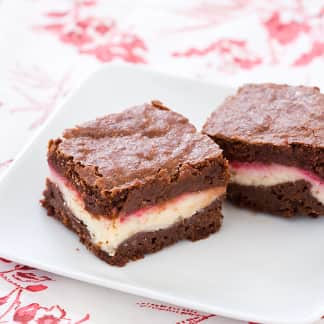Cream cheese is a staple on the breakfast table and a common dessert ingredient, but who knew that it’s also part of United States history? In the 19th century, Americans were hungry for European cheeses, but the trip across the Atlantic Ocean was expensive and, without refrigeration, the cheeses often spoiled in transit. A New York farmer named William Alfred Lawrence saw an opportunity. Mimicking creamy French Neufchâtel, he developed a smooth, rich block of cheese (the block shape was cheaper to produce) with more cream and salt than the original. He named it “cream cheese” and skirted the time and expense of aging by emphasizing his cheese’s farm-fresh flavor. He branded it “Philadelphia Cream Cheese” after a city then associated with farming and quality dairy. Lawrence’s invention became hugely popular and is still the number-one cream cheese today. But how do its imitators stack up?
To find out, we gathered four nationally available cream cheeses. We found them in two different kinds of packaging; three are foil-and-cardboard-wrapped bricks, and one comes in a plastic tub. They were all traditional full-fat cream cheese; we saved whipped and low-fat varieties for another day. We asked 21 America’s Test Kitchen staffers to blindly sample each plain, on bagels, and in cream cheese frosting.
Tasters immediately singled out one brick-style cream cheese for its “rich,” “mild,” and “classic” flavor. As one taster said, it was “a little tangy, a little sweet, a little salty”—the definition of balanced. Yet while we liked some tang, one product, made by Cabot, drew criticism for its “sharp,” “borderline sour” flavor. According to Dean Sommer, cheese and food technologist at the Center for Dairy Research at the University of Wisconsin–Madison, cream cheese is an acid-set cheese, which means that the lactic acid produced by the cheese cultures coagulates the proteins in the milk (most other cheeses are coagulated with rennet). He suspects that the sour flavor of cream cheese is the result of allowing the cultures to overacidify the milk.

Cabot’s offering also had 25 percent less sodium per serving than our winner (80 milligrams versus 105 milligrams), reminding us of the importance of salt in enhancing and balancing flavors in food.
Another cream cheese, Organic Valley, looked yellowish and tasted superfatty; one taster wondered, “Is this butter?” We noted that the cheeses all had similar fat levels, so we turned to our science editor, who pointed out that certain strains of cheese culture can produce aroma compounds similar to those found in butter. Two other manufacturers added cheese culture, too, but cultures can vary widely, and some strains are much more flavorful or distinct than others. Cow diet could also be a factor in buttery flavor and color. Tasters noted a “grass-fed” complexity in this cream cheese, and a call to the manufacturer revealed that its cows are indeed pastured as much as possible, resulting in more diversely flavored milk and cream and a yellowish hue. This was distracting for some when tasted plain or on a bagel, but we liked it in the cream cheese frosting, where its assertive tang found its footing among other rich, sweet ingredients.
Texture mattered, too. Tasters preferred thicker samples that were creamy and dense to the one tub-style cheese, which was still good but different—“glossy” or, as one taster put it, “like the love child of cream cheese and sour cream.” But our top-rated cream cheese, a brick, and the tub-style option were from the same manufacturer. Why the differences? We talked to the producer and examined ingredient lists and discovered that the tub-style version is formulated with more water to give it a thinner, softer texture and that a higher water content provides more sheen; air is also mixed in to make it lighter and fluffier (it is not marketed as “whipped” but as a spread). Tasters still liked it, but overall we preferred our cream cheese slightly denser.
One cream cheese took the top spot, scoring a full point above the rest. Can you guess which? Surprise, surprise: Philadelphia Cream Cheese Brick Original. Its “classic,” “fresh” flavor and “subtle tang” reminded us of farm-fresh milk, just as William Lawrence intended almost 150 years ago.
- Taste plain
- Taste on bagels
- Taste in cream cheese frosting
- Fresh, milky flavor
- Balanced tang
- Creamy, dense texture
- Pleasant, detectable saltiness
